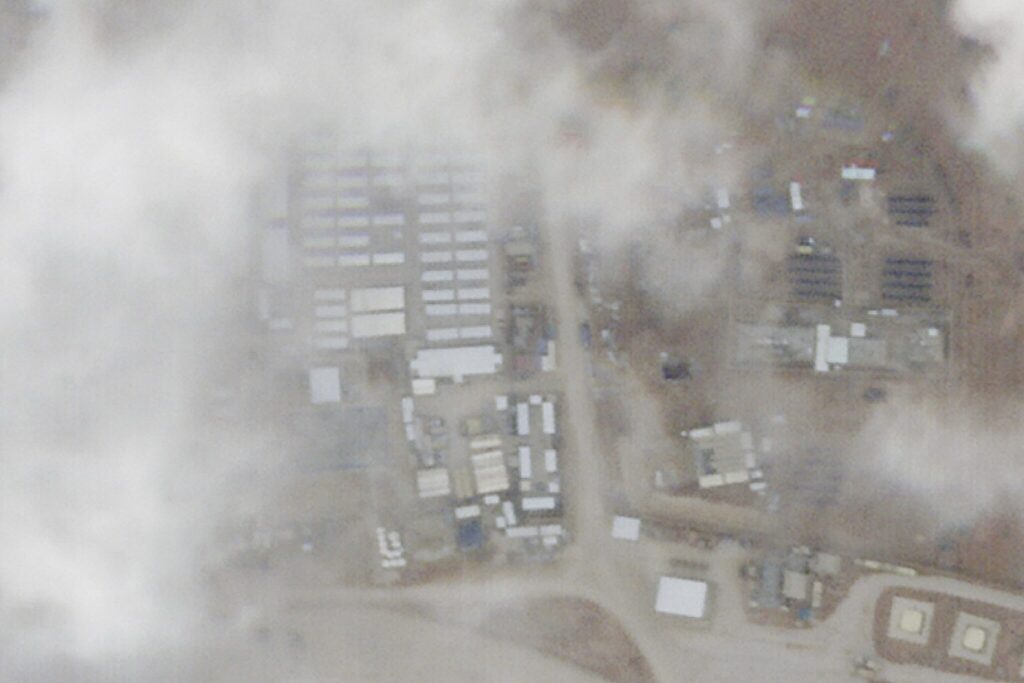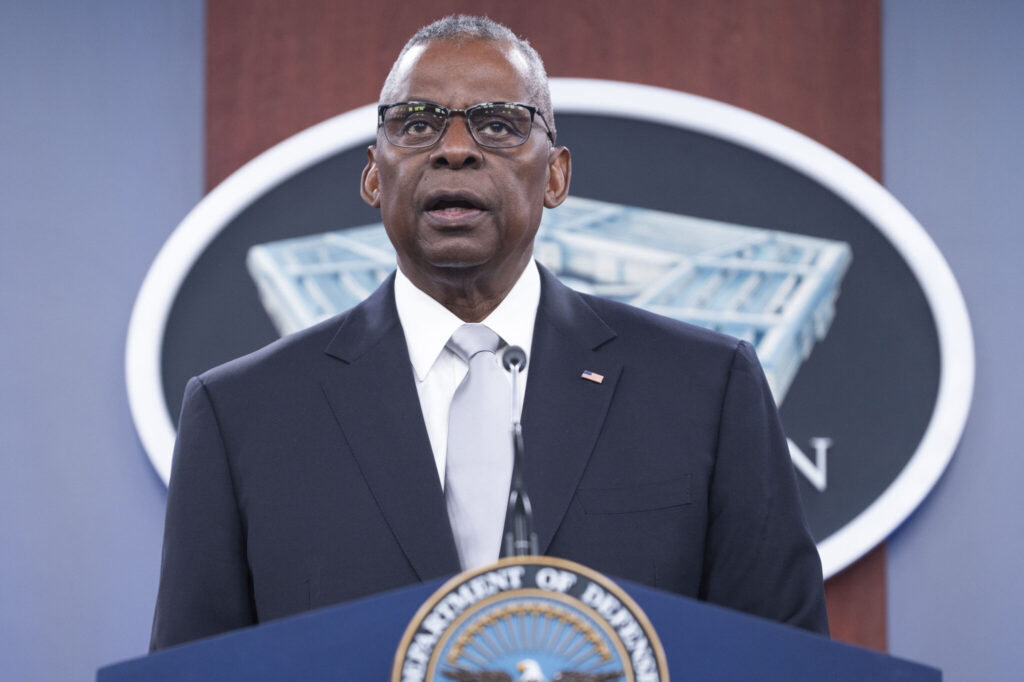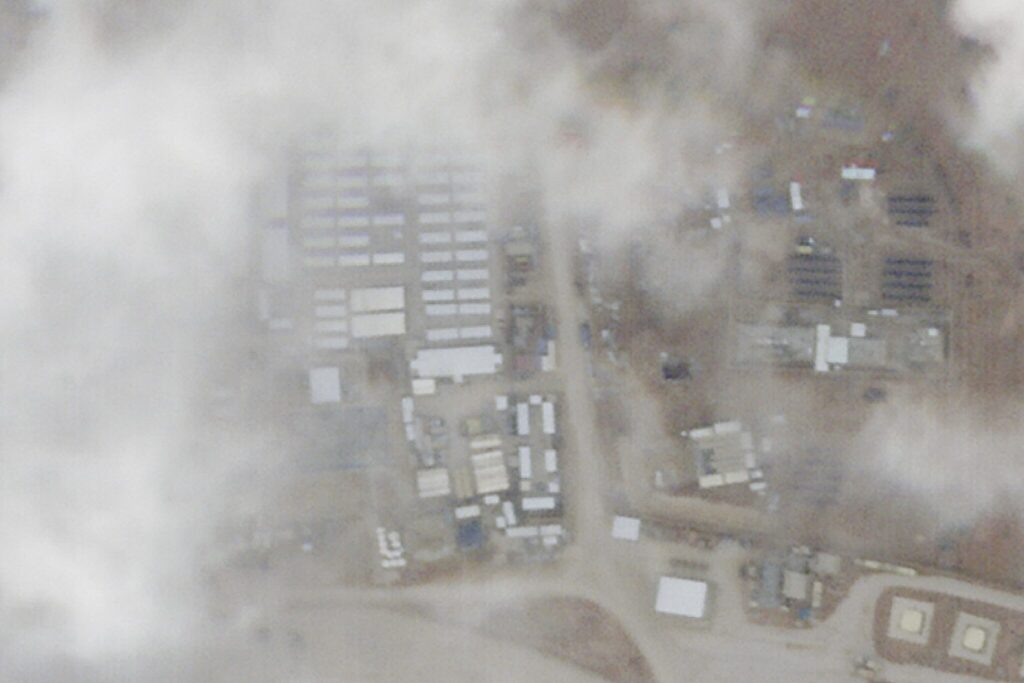The U.S. military launched an air assault on dozens of sites in Iraq and Syria used by Iranian-backed militias Friday, in the opening salvo of retaliation for the drone strike that killed three U.S. troops in Jordan last weekend, officials told The Associated Press.
Quick Read
- US Retaliates for Jordan Attack: US launches air strikes on Iranian-backed militia sites in Iraq and Syria.
- Biden’s Tiered Response: President Joe Biden promises a multi-stage retaliation for the drone strike that killed three US troops.
- Militia Defiance: Iranian-backed militias vow to continue attacks despite US military action.
- Increased Regional Tensions: Middle East conflict escalates with missile intercepts and additional strikes in Yemen.
- Wider US Military Strategy: US contemplates extensive response, including targeting militia leaders in Syria, Yemen, and Iraq.
- New Sanctions Imposed: US Treasury sanctions networks in Iran and Hong Kong for aiding ballistic and drone technology procurement.
- Bolstered Defenses in Jordan: US strengthens protections around Jordan base after deadly drone attack.
- Defense Secretary’s Commitment: Lloyd Austin signals an expanded US response to militia attacks.
- Ongoing Communication with Iran: US attempts to engage Iran to control militant groups.
- Continued Militia Attacks: US facilities face persistent threats, with over 166 attacks since October.
The Associated Press has the story:
US begins strikes on militias in Iraq & Syria, retaliating for drone attack
Newslooks- WASHINGTON (AP) —
The U.S. military launched an air assault on dozens of sites in Iraq and Syria used by Iranian-backed militias Friday, in the opening salvo of retaliation for the drone strike that killed three U.S. troops in Jordan last weekend, officials told The Associated Press.
President Joe Biden and other top U.S. leaders have been warning for days that the U.S. would strike back at the militias, and they made it clear that it wouldn’t be just one hit, but would be a “tiered response” over time. The officials spoke on condition of anonymity to discuss military operations not yet made public.

The initial strikes by manned and unmannded aircraft were hitting command and control headquarters, ammunition storage and other facilities. And they came just hours after Biden and top defense leaders joined grieving families to watch as the remains of the three Army Reserve soldiers were returned to the U.S. during a somber ceremony at Dover Air Force Base in Delaware.
The U.S. has bolstered defenses at a base in Jordan that was attacked by Iran-backed militants as it prepares for a wider U.S. response to the drone attack that killed three service members, a U.S. official said Friday.
Even as a larger U.S. military response seemed imminent, some Iran-backed factions pledged to continue to attack U.S. forces in the Middle East. In a statement released Friday, one of Iraq’s strongest Iran-backed militias, Harakat al-Nujaba, announced its plans to continue military operations against U.S. troops, despite other allied factions having called off their attacks in the wake of the Sunday drone strike in Jordan.

Some of the militias have been a threat to U.S. bases for years, but the groups intensified their attacks in the wake of Israel’s war with Hamas following the Oct. 7 attack on Israel. The war has led to the deaths of thousands of civilians in Gaza and spilled across four other countries now. Iran-backed militia groups throughout the region have used the conflict to justify striking Israeli or U.S. interests, including threatening civilian commercial ships and U.S. warships with drones or missiles in almost daily exchanges.
On Friday, the Israeli military said its Arrow defense system intercepted a missile that approached the country from the Red Sea, raising suspicion it was launched by Yemen’s Houthi rebels. The rebels did not immediately claim responsibility.
A second U.S. official said the military had taken additional self-defense strikes inside Yemen Friday against Houthi military targets deemed an imminent threat. Al-Masirah, a Houthi-run satellite news channel, said that British and American forces conducted three strikes in the northern Yemeni province of Hajjah, a Houthi stronghold.
While previous U.S. responses in Iraq and Syria have been more limited, the attack on Tower 22, as the Jordan outpost is known, and the deaths of the three service members has crossed a line, the official said. In response, the U.S. is weighing a much wider response to include striking militia leaders. The U.S. options under consideration include targets in Syria, Yemen and Iraq, where the Iranian-made drone that killed the service members was fired from, the official said.
Also on Friday, the U.S. Treasury imposed new sanctions on a network of firms in Iran and Hong Kong that are accused of assisting Iran procure technology to make ballistic weapons and drones. And the U.S. hit six Iranian officials with sanctions for allegedly committing a series of malicious cyber activities against critical infrastructure in the U.S. and other nations.
The attack on Tower 22 led to the first combat deaths of U.S. service members since the war between Israel and Hamas broke out. U.S. response options were being weighed as President Joe Biden, Defense Secretary Lloyd Austin and Chairman of the Joint Chiefs Gen. CQ Brown traveled to Dover Air Force Base in Delaware to be with the families of those fallen soldiers as their remains were returned to the U.S.
The U.S. has blamed the Jordan attack on the Islamic Resistance in Iraq, a coalition of Iranian-backed militias. In the days since the attack, the U.S. has bolstered the defenses around Tower 22, which houses about 350 U.S. troops and sits near the demilitarized zone on the border between Jordan and Syria. The Iraqi border is only 6 miles (10 kilometers) away.
On Thursday Defense Secretary Austin indicated that the U.S. response against the militias would widen.
“At this point, it’s time to take away even more capability than we’ve taken in the past,” Austin said in his first press conference since he was hospitalized on Jan. 1 due to complications from prostate cancer treatment.
Austin said that Iran has had a hand in the attacks by supplying and training the militias. The U.S. has tried to communicate through backchannels to Iran over the last few months to get them to rein in the militant groups, another U.S. official said.
The officials spoke on the condition of anonymity to discuss details that have not been acknowledged publicly.
The U.S. has also tried more limited military responses in a series of strikes against weapons storage sites and training areas. So far, the U.S. response has not deterred the groups, which have attacked U.S. facilities at least 166 times since October.
At least one group, Kataib Hezbollah, another powerful Iranian-backed Iraqi militia, which has been watched closely by U.S. officials, said Tuesday it would “suspend military and security operations against the occupying forces” to avoid embarrassing the Iraqi government in the wake of the Jordan attack.







